| ▲ 이용찬 = 본지 전북취재본부 문화국장. © 김현종 기자 |
|
전북 정읍 황토현 기념공원 교육관에서 지난 5일 열린 '동학농민혁명 국제 컨퍼런스(conference)'는 그동안 침체일로에 있던 동학농민혁명 '고부봉기'를 국제적 협의를 통해 새로운 방향으로 이끌어갈 목적으로 첫 시도했다는 점에서 시민들의 격려가 쏟아졌다.
특히 이날 기조 강연에 나선 농민화가 박홍규 작가는 그동안 자신이 작업했던 동학농민혁명 작품들을 설명하며 동학농민혁명 당시의 역사적 사실과 인물ㆍ그 인물들의 사상을 어떻게 생생한 그림으로 묘사해 왔던가를 들춰내 매우 뜻 깊은 시간이었다.
이어진 원광대 디지털콘텐츠학과 원도연 교수의 '정읍 동학농민혁명 기념사업의 역사와 의미' 강연은 그동안 조명 받지 못했던 고부 농민봉기를 재평가하는 시간을 통해 1894년 1월부터 고부봉기 → 무장 →백산 → 4월 황토현 전투 → 5월 전주입성 → 집강소 통치기 → 6월 청일전쟁 → 갑오개혁 등의 1차 봉기와 9월의 2차 봉기 → 우금치 전투 → 원평 전투(전봉준 피체) → 전봉준 처형까지의 과정을 자세히 소개했다.
원 교수는 이 과정에 고부봉기 이전까지의 고부는 전라도 전체에서 전주 다음으로 면적과 인구 모두 7만2천여명에 이르는 전주 다음으로 가장 큰 두 번째 도시(인구 2만900여명)였다는 사실을 설명했다.
또, 당시 일본은 동학농민혁명이 가진 혁명성과 민중의 의지를 본질적으로 억압하기 위해 공간 해체를 시도했다는 사실을 상기시켰다.
또한, 이것은 과거 일본이 그들의 전국시대부터 전통적으로 행해온 정치적 경쟁자에 대한 탄압의 한 방식이기도 했다는 점ㆍ역사적 조명을 받지 못하고 있는 고부봉기는 단순 민란이 아닌 1860년대 이후 거듭된 민란이 혁명으로 전환하던 기점이 되었다는 것 등을 두드러지게 밝혔다.
이뿐만 아니라 고부관아는 동학농민혁명의 첫 출발점이 된 장소라는 점과 고부관아는 동학농민혁명뿐만 아니라 조선 후기의 부패하고 무능한 권력과 그에 저항한 농민들의 한과 투쟁을 상징하는 장소라는 점, 그래서 고부봉기를 단순 민란에서 동학농민혁명의 의미 있는 출발이라는 관점으로 전환하고 그 메시지를 전달하는 작업 등이 필요하다는 사실을 강조했다.
아울러, 고부봉기는 동학농민혁명의 첫 출발점이자 1860년대 이후 지속적으로 발생한 각 지역의 민란이 드디어 혁명으로 발전하는 계기가 된 사건이라는 점, 해방 이후, 1961년 5·16 쿠데타로 권력을 장악한 박정희 정권이 1962년 말부터 대통령 권한 대행으로 활동하면서 자신의 권력 장악을 정당화하기 위한 수단으로 동학농민혁명 정신을 부각하며 최초의 동학기념 탑이 1963년 10월 제막할 수 있었던 배경을 설명했다.
이후 1967년 12월, 전국 최초로 정읍에서 '갑오동학혁명기념사업회'가 결성된 이후, 거의 매년 기념제가 개최됐지만, 1980년 5월 11일 당시 김대중 선생의 정읍 발언 18분으로 기념사업회의 고난이 있었다는 점, 1981년 2월 전두환 당시 대통령이 정읍을 방문해 '전봉준은 훌륭한 애국선열'이라고 언급해 새로운 전환점으로 작용해 1983년 현재의 황토현에 4만5천여평의 부지에 기념관이 건립될 수 있었던 배경 역시 덧붙였다.
따라서 정읍은 한국 현대사에 있어 동학농민혁명 기념사업의 역사를 그대로 안고 있는 유일한 도시였고, 정읍이 지켜온 동학농민혁명 기념사업의 역사는 그 자체로 동학농민혁명의 성지로서 정읍의 의미와 위상을 반영하는 것이라는 사실도 함께 역설했다.
또한, 지난 2019년 국가기념일 지정과 2021년 동학 기념공원 조성까지 이루어진 상황이라는 점에서 정읍 동학농민혁명 기념사업은 이제 새로운 단계로의 방향성과 목표에 대한 고민에 나서야 한다는 점을 강조했다.
또한, 이에 대한 대안으로 원 교수는 1세대 정읍의 동학제, 2세대 100주년 기념사업과 국가적 인정, 3세대 동학농민혁명의 새로운 가치로서의 전환기를 맞고 있지만, 정읍 기념사업에서의 고유한 역할은 오히려 약화하는 딜레마에 빠져 있었다며 고부관아의 복원을 비롯한 새로운 환경과 조건에 걸맞은 고부농민봉기의 재조명 황토현 전적지의 재구성, 만석보를 매개로 한 기념사업 등 명소화 사업 등을 주문하기도 했다.
이어 정읍에는 이미 동학 유적지와 관련시설이 60여 개가 넘는 기념시설이 있지만, 상징성과 대표성이 부족한 상황이라며 우선은 학계가 지칭하는 '고부민란'의 '고부봉기'로의 명칭전환, 기념 시설들의 통합과 재정비 등을 통한 고부봉기의 시대사적 맥락을 이해하는 사업 등을 먼저 추진해 줄 것을 추가로 주문했다.
원도연 교수가 조사한 동학농민혁명의 여러 사건 중 중요한 사건에 대한 전 국민 조사에서는 사발통문결의는 전 국민 18.5%ㆍ정읍시민 31.2% → 고부봉기 전 국민 15.3%ㆍ정읍시민 38.0% → 전주성 입성 전 국민 13.1% 등의 순서로 응답 되는 결과가 나오기도 했다.
반면, 정읍시민들은 고부봉기 → 사발통문 → 황토현 전투의 순서로 응답해 상당한 차이를 보였다.
따라서 이러한 복수 응답을 통한 전 국민 조사를 통합해 보면, 1+2 순위가 전주성 입성 → 우금치 전투 → 사발통문 결의 등으로 다른 결과가 도출되고 있다는 것을 알 수 있다.
이런 점에 비추어 보면, 그동안 학계는 '무장기포'를 의식해 '고부봉기'를 '단순 민란(民亂)'이라고 폄훼해 왔었지만, 여전히 전 국민적 관심은 특정 지역의 동학을 학계가 밝히는 '학술적 가치'로 인정해 왔던 것이 아니라 고부봉기를 더욱 중요한 가치로 보고 있었다는 것을 알 수 있다.
따라서 향후 정읍시에서의 동학농민혁명 기념사업은 그동안 지역적 사건으로만 국한하던 학술적 해석을 따르기보다는 전 국민적 관심을 반영해 세계사적 혁명으로 나아갈 수 있는 다양한 기념사업으로의 전환을 모색해야 할 것으로 보인다.
실제로 지난해 12월 17일, 정읍시가 주최하고 정읍 동학농민혁명 국제 컨퍼런스 조직위원회가 주관해 전주 라한호텔에서 소규모로 개최한 '동학농민혁명 국제 컨퍼런스'에서 기조 강연에 나선 도올 김용옥 교수도 큰 틀에서 동학을 설명한 바 있다.
김 교수는 "서양의 혁명(revolution)이라는 말은 '천체의 회전(revolution of the celestial bodies)'을 의미하지만, 이 말은 기존의 체제나 권력ㆍ가치 등의 총체적인 전복(顚覆)을 의미하기에는 매우 부족한 의미"라고 밝힌 바 있다.
이러한 점에 비추어 보면, 그동안 우리나라에서의 동학농민혁명은 학계가 고집하는 ‘학술적 발견’이라는 연구성과 즉, '무장기포가 진정한 동학혁명의 시작'이라는 소명제 앞에서 동학농민혁명이 큰 틀에서 앞으로, 세계로 나가지 못하고 지역 내에서 표류하는 혁명으로 점철되었는지도 모른다.
동학(東學) 혁명(革命)의 의미가 서학(Western I earning)에 대립하는 개념이 아니듯 더 이상 변화를 거부하며 고착화된 '학술적 발견'에만 머물러 있을 것이 아니라 동학을 무엇보다 상징적으로 나타낼 수 있는 '고부봉기'로의 조화를 시도해야 할 때가 아닌가 생각된다.
또한, 지역 간의 상호적 교감을 통해 그동안 지역에서 표류하던 동학에 머물게 하지 말고 동학이 고부를 시작으로 전국 각 지역으로 뻗어 나갔듯 이제는 세계의 혁명사로 빛날 수 있는 가치로 승화시켜 나가려는 노력이 지역과 학계의 바람으로 이어지기를 소망해 본다.
☞ 아래는 위 기사를 구글 번역이 번역한 영문 기사의 '전문' 입니다.
구글 번역은 이해도를 높이기 위해 노력하고 있으며 영문 번역에 오류가 있음을 전제로 합니다.
【Below is the 'full text' of the English article translated by Google Translate.
Google Translate is working hard to improve understanding, and assumes that there are errors in the English translation.】
【Interview notebook】 Jeongeup… The 'holy ground' of the Donghak Peasant Revolution
Lee Yong-chan = Director of Cultural Affairs, Jeonbuk Coverage Headquarter
The fact that the 'Donghak Peasant Revolution International Conference' held on the 5th at the Hwangto-hyeon Memorial Park Education Center in Jeongeup, Jeollabuk-do was the first attempt to lead the Donghak Peasant Revolution 'Gobu Uprising' in a new direction through international consultation. There was an outpouring of encouragement from citizens.
In particular, artist Park Hong-kyu, a peasant painter who gave a keynote lecture on this day, explained the works of the Donghak Peasant Revolution he had worked on so far, revealing how he had vividly depicted historical facts, figures, and their ideas at the time of the Donghak Peasant Revolution. It was time.
The following lecture, 'The History and Meaning of the Donghak Peasant Revolution Commemorative Project in Jeongeup' by Professor Won Do-yeon of the Department of Digital Contents at Wonkwang University, reevaluated the Gobu peasant uprising that had not been spotlighted so far. Hwangtohyeon Battle → Jeonju Fortress in May → Jikgangso Rules → Sino-Japanese War in June → 1st uprising such as Gabo Reform and 2nd uprising in September → Battle of Woogeumchi → Battle of Wonpyeong (Bongjun Jeon) → Execution of Bongjun Jeon in detail did.
In this process, Professor Won explained that Gobu, before the Gobu uprising, was the second largest city (population 20,900) after Jeonju in Jeolla-do with an area and population of 72,000.
Also, it reminded us of the fact that at that time, Japan attempted to dismantle the space in order to essentially suppress the revolutionary spirit of the Donghak Peasant Revolution and the will of the people.
In addition, this was also a method of oppression against political rivals that Japan had traditionally carried out since its Warring States period in the past. It was clearly stated that this happened.
In addition to this, the fact that Gobu Gwana was the first starting point of the Donghak Peasant Revolution and that it symbolized not only the Donghak Peasant Revolution but also the corrupt and incompetent power in the late Joseon Dynasty and the struggle of farmers who resisted it. It was emphasized that it was necessary to convert the uprising from a simple civil uprising to a meaningful start of the Donghak Peasant Revolution and to deliver the message.
In addition, the Gobu Uprising was the first starting point of the Donghak Peasant Revolution, and it was an event that led to the development of a revolution after the riots in each region that had been continuously occurring since the 1860s. As the regime acted as acting president from the end of 1962, it highlighted the spirit of the Donghak Peasant Revolution as a means to justify its seizure of power, and explained the background that the first Donghak Memorial Tower was able to be unveiled in October 1963.
Afterwards, in December 1967, after the nation's first 'Gapo Donghak Revolution Commemoration Project' was formed in Jeongeup, a commemorative event was held almost every year. In February 1981, then-president Chun Doo-hwan visited Jeongeup and mentioned that 'Jeon Bong-joon was a great patriot,' which served as a new turning point, and the background that the memorial hall could be built on a site of 45,000 pyeong in 1983 in present-day Hwangto-hyeon was also added. .
Therefore, Jeongeup was the only city in Korea's modern history that has the history of the Donghak Peasant Revolution commemorative project as it is, and the history of the Donghak Peasant Revolution commemorative project that Jeongeup has preserved reflects the meaning and status of Jeongeup as a holy place of the Donghak Peasant Revolution. The fact that it was also emphasized.
In addition, given that the designation of a national anniversary in 2019 and the creation of a Donghak Memorial Park in 2021 have been achieved, it was emphasized that the Jeongeup Donghak Peasant Revolution commemorative project should now start thinking about the direction and goals to a new stage.
In addition, as an alternative to this, Professor Won is facing a transition period as a new value of the 1st generation Jeongeup's Donghak Festival, the 2nd generation's 100th anniversary commemoration project and national recognition, and the 3rd generation Donghak Peasant Revolution, but his unique role in the Jeongeup Memorial Project is rather Saying that he was in a dilemma of weakening, he ordered restoration of the Gobu government office, re-examination of the Gobu peasant uprising suitable for the new environment and conditions, reconstruction of the battlefield in Hwangto-hyeon, and commemorative projects through Manseokbo.
Jeongeup said that there are already more than 60 memorial facilities with Donghak historical sites and related facilities, but they lack symbolism and representation. He additionally ordered that projects to understand the historical context of the Gobu uprising through reorganization should be promoted first.
In a national survey on important events among the various events of the Donghak Peasant Revolution researched by Professor Won Do-yeon, 18.5% of all citizens and 31.2% of Jeongeup citizens → 15.3% of all citizens of the Gobu Uprising and 38.0% of Jeongeup citizens → 13.1% of all citizens who entered Jeonju Fortress There were also results that were answered in the order of % and so on.
On the other hand, Jeongeup citizens responded in the order of Gobu Uprising → Sabal Tongmun → Battle of Hwangtohyeon, showing a considerable difference.
Therefore, when integrating the nationwide survey through these multiple responses, it can be seen that the 1+2 ranking is derived by entering Jeonju Castle → Battle of Woogeumchi → Resolution of Sabaltongmun, etc., resulting in different results.
In light of this, the academic world has been slandering the 'Gobu Uprising' as a 'simple civil war', conscious of the 'armed bubble', but the national interest is still the 'academic' that reveals the dynamics of a specific region It can be seen that Gobu uprising was viewed as a more important value rather than recognized as a 'value'.
Therefore, in the future, it seems that the Donghak Peasant Revolution commemorative project in Jeongeup City should seek to transform into various commemorative projects that can advance to a world-historic revolution by reflecting the national interest rather than following the academic interpretation that has been limited to local events.
In fact, on December 17 last year, Prof. Dool Kim Yong-ok, who gave a keynote speech at the 'Donghak Peasant Revolution International Conference' hosted by Jeongeup City and organized by the Organizing Committee of the Jeongeup Donghak Peasant Revolution International Conference, held at the Lahan Hotel in Jeonju on a small scale. has been described.
Professor Kim said, "The word 'revolution' in the West means 'revolution of the celestial bodies', but this word does not mean a total overthrow of the existing system, power, and values. It means very little."
In light of these points, the Donghak Peasant Revolution in Korea has been a research achievement of 'academic discovery' that the academic world insists on, that is, in front of the vocation that 'armed air gun is the beginning of the true Donghak Revolution', the Donghak Peasant Revolution is moving forward in a big frame It may have been punctuated by a revolution drifting within the region without being able to go out into the world.
Just as the meaning of the Donghak Revolution is not a concept that opposes Western Learning (Western I earning), it is no longer just refusing change and remaining stuck in 'academic discovery', but it can symbolize Donghak more than anything else. I think it's time to try to harmonize with 'Gobu Uprising'.
In addition, through mutual sympathy between regions, instead of letting Donghak drift in the region so far, just as Donghak spread to all regions of the country starting with Gobu, efforts to sublimate it into a value that can shine as a revolutionary history of the world are now I hope that it will lead to the wind of academia.
















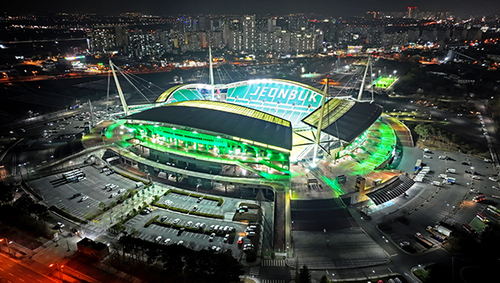
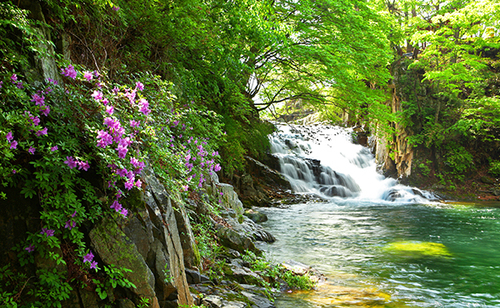
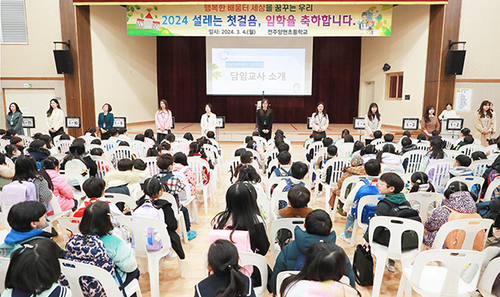
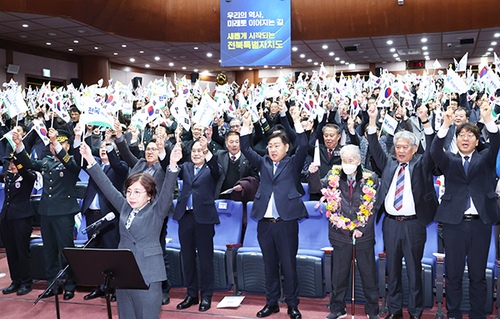
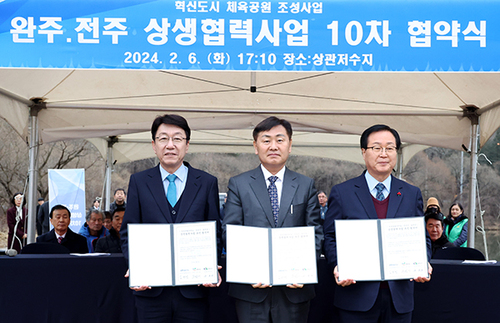
 많이 본 뉴스
많이 본 뉴스











